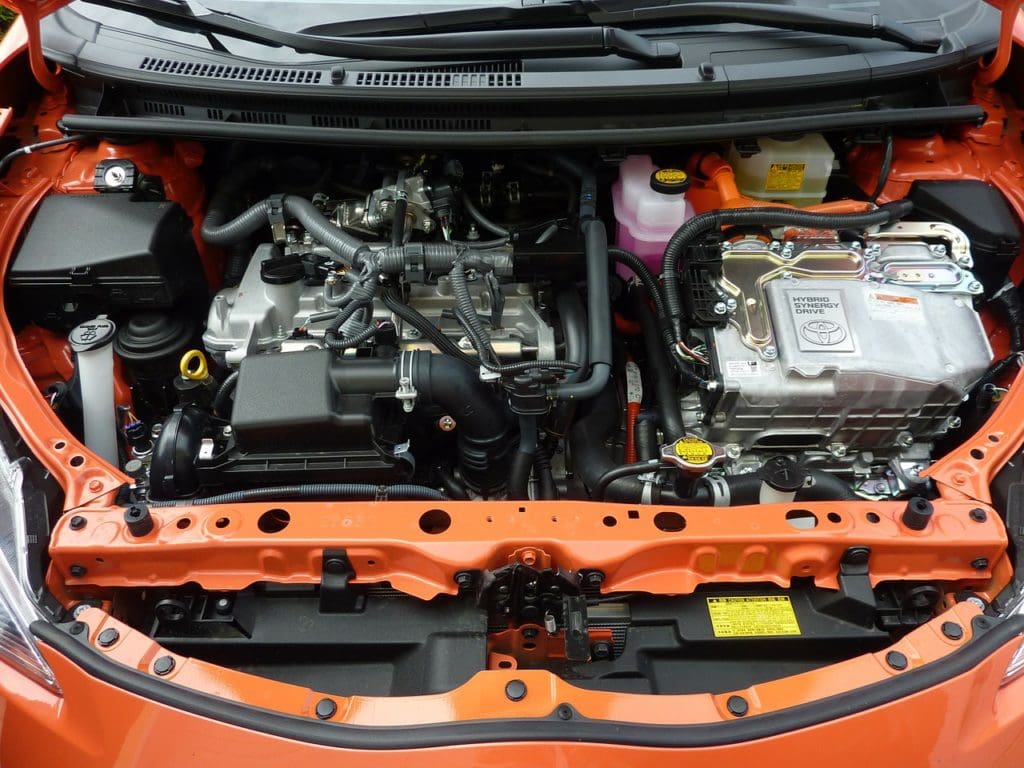When to Replace a Timing Belt? 7 Warning Signs
-
Pete Ortiz
- Last updated:

All vehicles must undergo routine maintenance checks to keep them running smoothly. One area that these checks focus on is the timing belt. This is an intricate part of your car engine, meaning failure could be catastrophic. This is probably why the timing belt replacement timeline is a common concern among vehicle owners.
The time to replace your car’s timing belt will be determined by the manufacturer-recommended replacement schedule. This information can be accessed from the owner’s manual. However, most experts recommend that you replace your timing belt every 60,000–90,000 miles. This will also depend on the make and model of your car.
Replacing the timing belt may be costly, but if you don’t, you could end up getting stranded on the side of the road and even incur a bigger bill. So, to help you avoid unnecessary inconveniences, this article will highlight the common signs of timing belt damage and the lifespan of a timing belt. We will also give you a general approximation of the cost of replacing a timing belt to prepare you financially. Read on to stay on top of your game.
Why Do You Need to Replace a Timing Belt?
Timing belts will need urgent replacement when damaged because without a fully functional belt, your engine will not run. They tend to get damaged because of being subjected to forces inside your engine. Over time the timing belt will exceed its lifespan, thus needing replacement.
What Is the Average Lifespan of a Timing Belt?

Timing belts need proper care and maintenance to prevent catastrophic damage to your engine. However, determining the best time to replace the timing belt can be difficult. The best action to take in understanding how long the timing belt is going to service your engine. Consult your owner’s manual for the recommended maintenance schedule. It will have accurate information on the make and model of your car.
Timing belts are changed at irregular times for various reasons. Also, because of its location inside the engine, most people forget its existence until it’s too late. Therefore, it’s wise to have a general timeline for how long your timing belt is expected to last.
Generally, the industry-standard timeline for timing belt replacement is between 60,000–90,000 miles. Some vehicles can even go up to 125,000 miles. For many car owners, this translates to about 6–10 years’ worth of driving before needing replacement. Naturally, the mileage will be far less if you drive your vehicle for a living.
The 7 Warning Signs of a Bad Timing Belt
Even though your car may have a timing belt with a 60,000 miles lifespan, sometimes unmitigated circumstances happen that may prompt a driver to replace it sooner. Even with higher mileage, some signs are a sure indicator that your timing belt requires urgent maintenance. If you notice any of these signs, schedule a meeting with your mechanic so that they can assess the situation to find out whether your belt needs replacement.
1. A Distinct Ticking Noise
When your timing belt is about to fail, you will notice a repetitive ticking or clicking sound emanating from your engine. Timing belts are designed to run through pulley systems to operate the camshaft. The teeth on the inside are meant to grip and allow smooth turning.
When things go awry, the clicking sound will start coming from the engine. Since the engine rotates at a fast pace, the sound will be emanating in tandem with the timing of your engine.
2. Squealing Sound
Besides the ticking noise, you may also notice an internment squealing noise coming from your engine. While the ticking noise is constant when driving, the squealing noise tends to happen only when you are accelerating or braking. Sometimes, the noise is witnessed while idling. There may be other possible reasons for a squealing noise in your engine, but it’s usually an indication of worn-out belts that are ready to be changed.

3. Loss of Oil Pressure
A simple oil leak could decrease your oil pressure. However, it is also a sign that your timing belt requires attention. The belt is located above the oil pan in your engine. So, if the little rubber teeth located inside your belt begin to break off, they will likely collect in the oil pan below.
Over time, the oil can bundle the teeth together and clog up the oil pan. This will consequently reduce the oil pressure. Low oil pressure can also lead to other serious complications, such as overheating due to limited oil circulation to keep the engine lubricated.
4. Total Engine Failure
We all know that a car will not start normally for a number of possible reasons. It could be because you are out of fuel or the car battery is simply dead. However, in this scenario, your car will not turn over because the timing belt is damaged.
When you start the car, your starter motor will engage, which you can hear. But since the belt is damaged, you will not be able to turn it over as you normally would. This is a somewhat unusual warning sign of timing belt failure because you should be able to notice something is wrong sooner.
However, consider yourself lucky if your belt snaps while your engine is off because, if it breaks while driving, the situation could be much worse. When in motion, you will likely destroy many interior engine components, including the crankshaft bearings, water pump, and cylinder heads, among others.

5. Engine Misfires
When your timing belt is worn out and on the verge of snapping, it throws the timing of the engine off. Since the belt is designed to maintain the function of your engine’s timing, when it snaps or slips, the valves will open at the wrong time. A combustion reaction will not occur at the exact time that you want to ignite your engine, leading to engine misfires.
6. Oil Leaks
Like many components of your vehicle, the timing belt is protected by a cover secured with nuts and bolts. These nuts and bolts loosen up over time and start leaking oil. Moreover, if the gasket between the timing belt cover and the engine block wears out, oil will be leaking from your engine and possibly coat the timing belt.
If the timing belt continues running while covered in oil, it will wear out at a faster rate. This could also lead to the development of overheating issues in your engine.
7. Engine Light Information
One of the most infuriating signs of problems in your car is the engine light turning on. Of course, you want to be forewarned about possible issues in your car before it’s too late. However, the engine light is usually vague and can turn on at any time to alert you of over 100 possible car issues. Sure, the engine light will not highlight what issue you are supposed to investigate in your engine, but it is at least more helpful than having no warning at all.
How Much Does It Cost to Replace a Timing Belt?
The above signs and symptoms are great indicators that your vehicle is experiencing a problem with the timing belt. You need to visit a mechanic as soon as possible to get the belt inspected and repaired.
Unfortunately, replacing a timing belt comes at a steep price tag. It will cost you anywhere between $500–$2,000, depending on the make and model of your car. The timing belt itself retails at approximately $100–$300 for the parts.
This is not an easy endeavor because it usually takes a mechanic about 3–4 hours to get the job done, hence the price tag. The mechanic also has to get deep into the engine to have better access to the components being replaced.
 Conclusion
Conclusion
As a car owner, you want to stay ahead of the curve in timing belt maintenance and repair. The belt plays a crucial role in the car engine and, if damaged, it could risk your life or leave you stranded on the side of the road.
When you notice the symptoms we have mentioned, make sure you get it checked out before the problem gets worse. You could end up racking up maintenance fees or even destroying your engine. Also, make it a habit to replace the timing belt after every 60,000–90,000 miles.
Depending on the make and model of your car, you can easily replace the timing belt to ensure that the engine runs smoothly. It will roughly cost you between $500–$2,500 to replace your timing belt.
Featured Image Credit: Photoman, Pixabay
Contents


